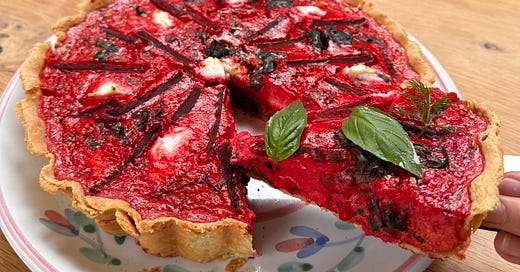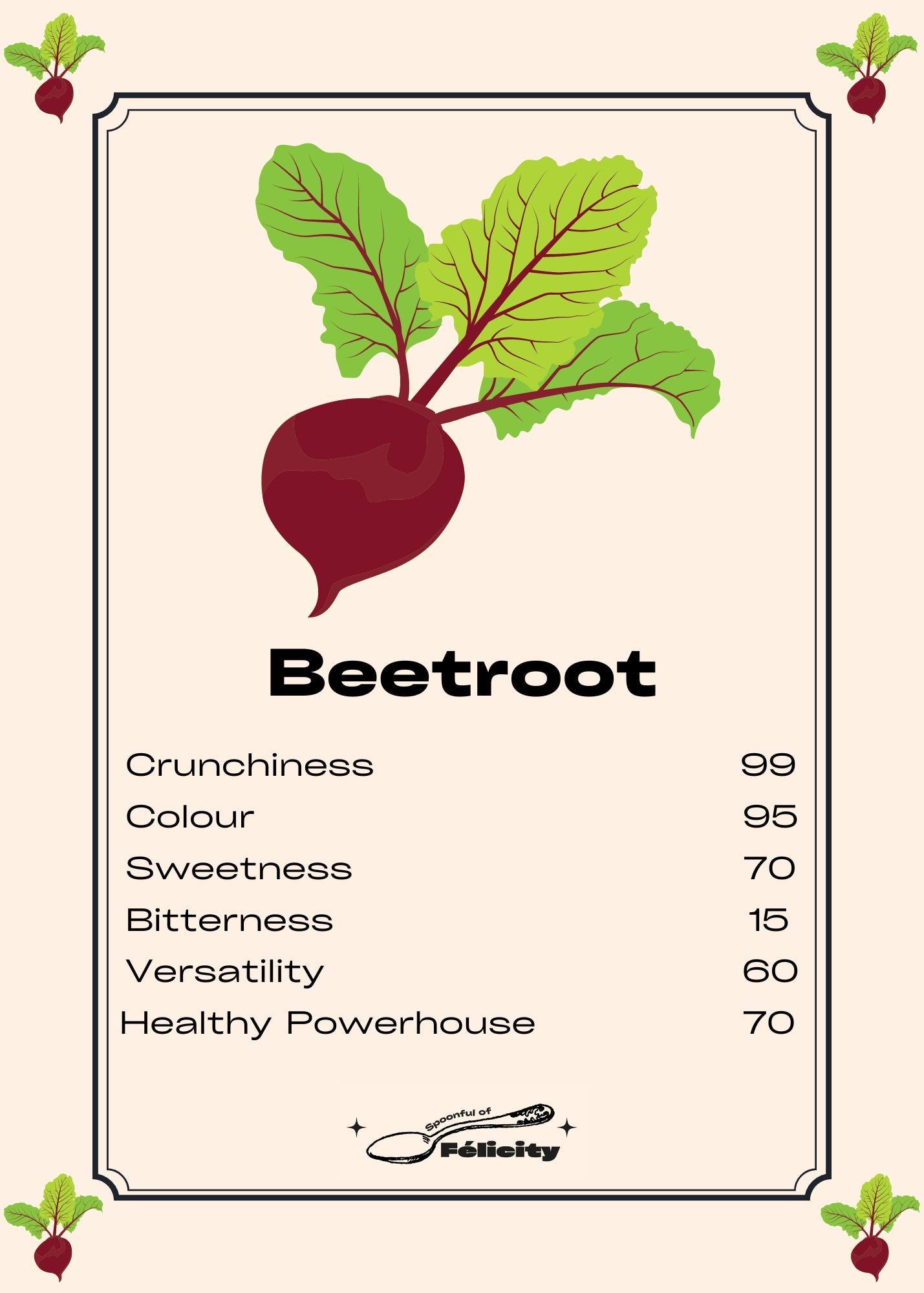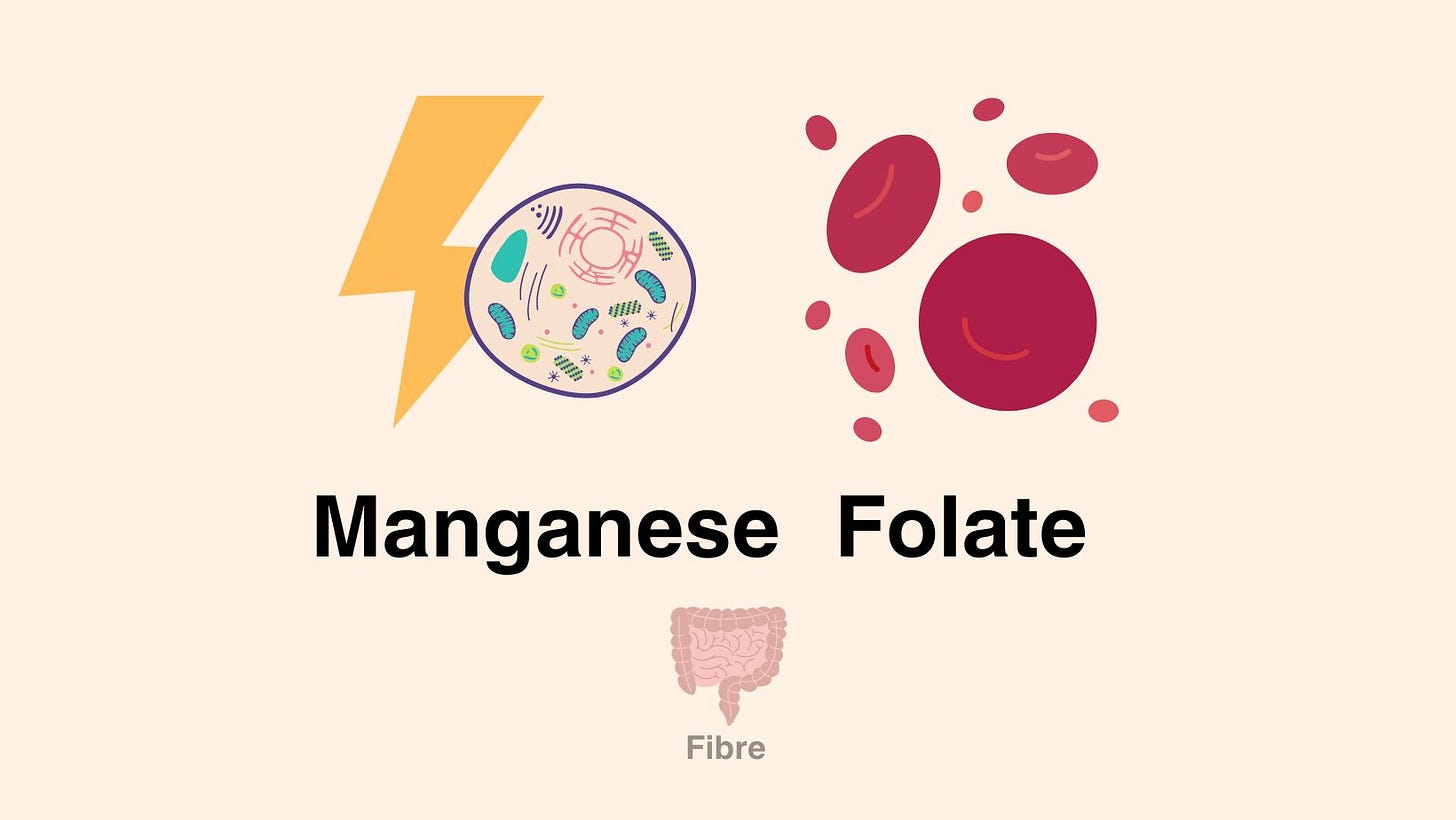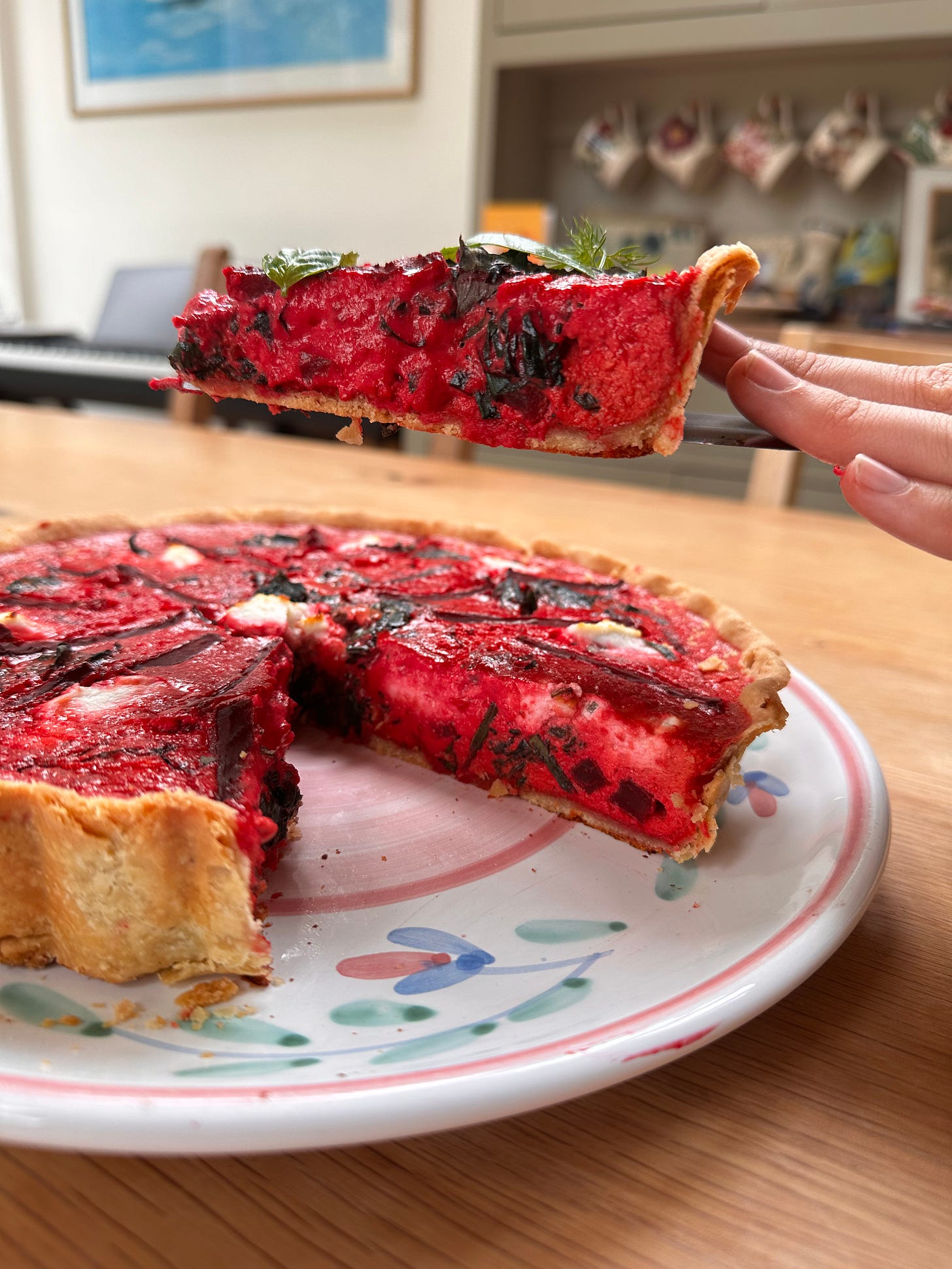HISTORY:
Another vegetable we've been eating for centuries! Beetroot was domesticated from its sea counterpart which grew along the coast of Eurasia and was first cultivated, most likely in the Middle East, for its leaves. We even know from ancient texts (800 BC) that it was grown in the hanging gardens of Babylon, one of the seven wonders of the Ancient World.
The roots used to be thin and long (similar to carrots) and mostly eaten for medicinal purposes, they started to resemble the round purple root we are now most familiar with in the 17th-18th century.
It is also in the 18th century that we started domesticating sugar beet. This large white root has since been cultivated selectively to increase its sugar content from 6% to around 18% and today around 20% of the world’s sugar production comes from beetroot.
FUN FACTS:
Renowned Italian Renaissance author of the very first printed cookbook, Bartolomeo Platina, recommended beetroot to remove garlic breath. As a connoisseur of garlic breath, I can confirm this isn't true!
It was common in Ancient Rome to colour red wine using beetroot juice, and the Victorians used it to dye their hair. These days, it is used as a red colouring for many food products from yogurt to crisps and is labelled as additive E162 in Europe.
This beautiful red/purple colour comes from betacyanin pigments which are also found in red quinoa, prickly pear and rainbow chard. They are different to the anthocyanins found in berries and other red fruit/veg, and you will never find both pigments in the same plant.
Betacyanins have many great properties such as antioxidant, anti-inflammatory, vascular-protective, anticancer and they have been shown to reduce the risk of liver disease. They are also the cause of beeturia i.e. turning your wee red, but that seems like a worthwhile side effect!
HOW TO COOK THEM:
Raw: Beetroot is delicious raw, it’s crunchy, sweet and earthy. You can easily add it to any salad or slaw for extra depth of flavour and colour. Peel it using a potato peeler and thinly cut it into slices or batons. Alternatively, you can slice it using a peeler or grate it. Likewise, you can add beetroot leaves to salads or use it instead of spinach (they actually taste quite similar). If you have the luxury of owning a juicer, they taste great as a juice with apple and celery for instance, or carrot and ginger.
Cooked: Roast the beetroot whole in some foil with a bit of oil, make sure it’s completely sealed and leave it for an hour in the oven. Once it’s cooled down, you should be able to peel it using your fingers. Alternatively, you can steam or boil beetroot until you can easily insert a knife into it. Once it’s cooked, you can use it to make soups or add it to salads and dips (such as houmous). When they’re at their peak and extra sweet, I like them sliced and simply topped with EVOO, flaky sea salt and balsamic vinegar. You can also roast beetroot like potato wedges and serve them warm as a side.
They pair particularly well with cheeses such as goat’s cheese, feta, ricotta and mozzarella; acidic notes from lemon, preserved lemon or balsamic vinegar; bitter and earthy greens such as spring cabbage, red cabbage, spinach, kale or asparagus; and sweet ingredients such as carrots, red onions but also apples, blackberries and cherries. Match them up with proteins like cod, hake, salmon, smoked salmon, chickpeas or lentils. Great herbs/spices to season them with are basil, horseradish, coriander seeds, caraway seeds, tarragon or dill.
MOOD FOOD - CALM:
Nitrates - lower blood pressure and improve brain oxygenation.
Folate - linked to levels of serotonin (one of the good mood hormones) - being low in folate increases your chance of feeling depressed.
RECIPE:
Beetroot, Basil & Goat’s Cheese Quiche
Ingredients (serves 4):
Quiche Mixture:
100mL milk, semi skimmed
200mL double cream
50g soft goat's cheese
2 eggs
2 egg yolks
10g parmesan, grated
140g beetroot, roasted or steamed
S&P
Quiche Filling:
100g soft goat's cheese
100g spinach
1/2 garlic clove
150g pickled beetroot, drained (or cooked/roasted beetroot)
20g basil
Pink Pastry:
250g plain flour
130g salted butter
1 egg
4 Tbs pickled beetroot brine, iced
Method:
Cook the beetroot:
Preheat the oven at 180°C.
Spread a bit of oil on a sheet of foil, then add 150g of raw beetroot. If they are as large as baking potatoes slice them in 2, otherwise leave them whole.
Wrap the beetroot in the foil and scrunch up the sides to fully seal them in. Use more foil if needed to make sure there are no open gaps, this will allow the beetroot to steam and its sugars and flavours to concentrate.
Place them on a baking tray and into the oven for 1 hour.
Remove from the oven and leave to cool down.
Open up the foil and remove the skin from the beetroot, you should be able to pull it off with your fingers.
Cut up the beetroot and put it aside for the quiche mixture.
Make the pink pastry:
Cut the cold butter into small cubes.
Weigh the flour into a large mixing bowl and add the butter. Toss the cubes into the flour until they are all coated, then start squashing each cube of butter between your thumb and index fingers. Finally, rub the mix between your hands until it resembles breadcrumbs.
Crack an egg into a small bowl and whisk it until homogenous.
Add the egg to the butter-flour mix and use a small smooth-edged knife (such as a butter knife) to cut the mixture until the egg starts to clump together with the mix.
In a small bowl, stir an ice cube into 4 Tbs of pickled beetroot juice until it's nice and cold. Pour the beetroot juice (without the ice cube) into the mix, cut it with the knife again to distribute the water throughout, then pour the entire mix onto a worktop.
Knead the mixture gently to combine and form a ball. It's important to keep it 'short' so try not to knead it for more than 30 seconds.
Place the dough in Tupperware and leave it in the fridge for 30 minutes to firm up a bit.
Prepare the pastry case:
Preheat the oven at 180°C.
Oil a tart tin, the filling recipe is enough to fill a 22cm-wide case.
Dust your work surface with some plain flour then roll out the dough into a 2cm-thick circle. I like to roll it out 2-3 times, then turn the dough by 95°, roll 2-3 times and turn it by 95° again and so on until it's 2cm thick, flouring the work surface as needed.
Dust the rolling pin with flour, roll the flattened dough onto it then back out onto the top of the oiled tart tin. Line the tin by lifting the edges of the dough to get it into all the corners. Use a little ball of dough to press it into the edges if needed and don't worry if some holes need filling in, just use a bit of the excess dough and a little bit of water to stick it together. I like to leave the dough overhanging on the sides to avoid disasters if the pastry shrinks in the oven.
Prick the bottom and edges of the dough with a fork.
Scrunch up some baking paper then place it on top of the tin. Fill it with baking beans or dry rice.
Place in the oven to cook for 15 minutes, remove the beans and cook for an extra 5 minutes to dry out the base. Then, remove from the oven and leave it to cool down.
Prepare the fillings:
Wilt the spinach in a medium hot pan for 2 minutes with 1/2 garlic clove (just peeled). Then place it onto kitchen roll to remove any excess moisture and remove the garlic clove. (you can rinse and use this in another recipe again). Once the spinach has cooled down, cut it into rough chunks.
Finely slice the basil leaves and stir them into the spinach (keep the basil stalks in your fridge to flavour your next pasta sauces).
Roughly cut up the goat's cheese into small bitesize lumps.
Drain the pickled beetroot and cut into sticks, about 1inch-thick.
Assemble the quiche:
In a large jug, add all the quiche mixture ingredients and blitz them up using a stick blender until smooth.
Put the tart case back onto a baking tray. (this will help with transportation into the oven once it's full)
Pour half of the mixture into the pastry case, then distribute half of the fillings into it. Top with the other half of the mixture. Finally, arrange the other half of the fillings into a circle on top, alternating goat's cheese, the spinach-basil mix and the beetroot sticks.
Place in the oven and cook for 40 minutes or until the centre jiggles like a set jelly.
Leave to cool down in the case and cut off the excess overhanging pastry with a bread knife.
Remove from the tart tin, slice up and enjoy. Bon appétit!
More about this beetroot recipe:
Shortcuts:
Use shop-bought shortcrust pastry but make sure to still blind bake it as per the 'Prepare the pastry case' section.
Use pre-cooked and peeled beetroot. Make sure to drain it before using it for the quiche mixture.
Keys to success:
When making bread, we are told to knead the dough until it becomes smooth and elastic. This is a sign that the gluten network has developed nicely and this will allow the bread to rise. With shortcrust the less gluten "formed", the better. The dough should instead be little pockets of butter interspersed between the flour so that they melt and create layers of crispy flaky pastry. That's why it's important not to knead the dough too much, to avoid melting the butter and creating a gluten network. I have been known to be so nervous of over-kneading though that I didn't knead it enough! You still need the flour to be fully hydrated and all the ingredients to be combined so you can roll it out later on. 30 seconds - 1 minute usually does the trick, I've added a detailed uncut video below of making the pastry if it's your first time.
If the pastry is overworked or has had too much liquid added to it, it will shrink a lot during baking. To avoid any disasters and remove the stress of it all, I like to just leave some pastry hanging over the sides and cut it off once it's cooked through. The trimmings make great crackers for dips and cheese afterwards!
Blind bake the pastry: to avoid a soggy bottom, bake the pastry in the oven before filling it. If the edges start to colour before the base has dried out, cover them with foil. Use beans to stop the base from rising when it cooks but remove them for the final 5 minutes to still allow it to dry out evenly.
Cool the pastry down completely before adding the fillings and quiche mixture.
You can use water instead of beetroot brine and use this pastry for any tart/quiche. Just make sure the water is ice cold to avoid melting the butter.
Health benefits:
Beetroot is a great source of
folate which supports the formation of red blood cells and serotonin
manganese which contributes to healthy cells and transforming food into energy
fibre which improves gut health and helps prevent diseases such as colon cancer and type 2 diabetes
Beetroot is also full of betacyanins which not only give it its beautiful purple colour but also have many beneficial properties such as antioxidant, anti-inflammatory, vascular-protective, anticancer and they have been shown to reduce the risk of liver disease.
It's also rich in nitrates which transform into nitric oxide using the bacteria in our mouths. This nitric oxide is likely the reason that beetroot has been shown to:
help lower blood pressure
improve exercise performance
improve cognitive function
This is likely because it increases the size of our blood vessels and therefore improves blood flow.






